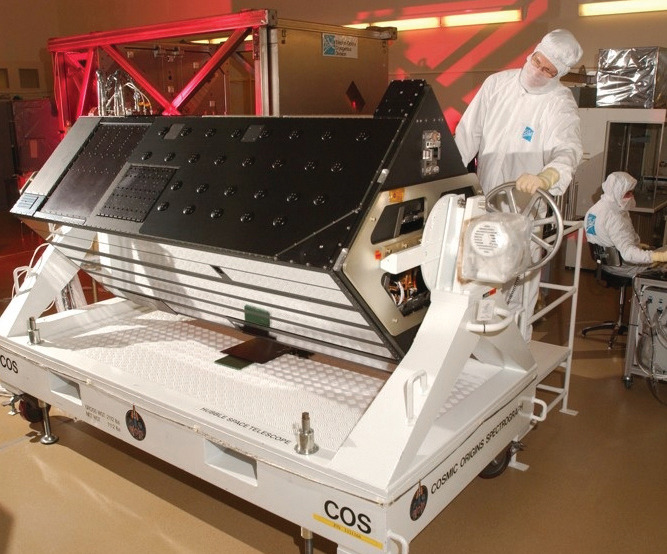Hubble's Cosmic Origins Spectrograph Instrument Is Back In Action
It's been something of a rough month for the Hubble Space Telescope. Toward the end of October, NASA detected that Hubble's science instruments had lost synchronization and automatically entered safe mode – a problem it reported on November 1st. Throughout the rest of the month, NASA has been exploring the issue and bringing those instruments out of safe mode one by one. Today, the organization announced that one more tool has been taken out of safe mode, meaning Hubble is one step closer to being fully functional again.
Hubble's Cosmic Origins Spectrograph returns
In an update published to its website today, NASA announced that the Cosmic Origins Spectrograph returned to functionality over the holiday weekend, exiting safe mode on November 28th. With the Spectrograph up and running again, NASA now has three of the four instruments on board the Hubble collecting scientific data once more.
With the reactivation of the Cosmic Origins Spectrograph, Hubble is one step closer to regaining full functionality. All four instruments originally kicked into safe mode when Hubble started showing several lost synchronization errors at the end of October. Those errors prompted the instruments to enter safe mode autonomously, with NASA spending the last few weeks bringing them back online.
As NASA launched its investigation into the issues, it brought the Advanced Cameras for Surveys back on November 7th and the Wide Field Camera 3 back on November 21st. With the Cosmic Origins Spectrograph back online, now NASA just needs to bring one more instrument back before Hubble is back to its old self.
In today's update, NASA said that it hasn't received any lost synchronization messages since it started watching for them on November 1st, and that it's also working on a software update that will allow all four instruments to keep taking measurements even when the space telescope encounters several such messages in a row.
What the heck is a Cosmic Origins Spectrograph?
This instrument is an important one because it handles the big picture research conducted by Hubble. The space telescope, of course, has a pair of cameras it uses for imaging, but the Cosmic Origins Spectrograph (seen below) uses spectroscopy to look into the origins of the various star and planetary systems within the Milky Way galaxy and beyond.

As NASA explains in a separate page on its website, spectroscopy is "the science of breaking light down to its component parts, similar to how a prism splits white light into a rainbow." NASA explains that the Cosmic Origins Spectrograph is one of two spectrographs on the Hubble, as it's paired with the Space Telescope Imaging Spectrograph. The Cosmic Origins Spectrograph is the specialist of the pair, as it's able to measure "exceedingly faint levels of ultraviolet light emanating from distant cosmic sources, such as quasars in remote galaxies."
The Cosmic Origins Spectrograph is actually a relatively new addition to the Hubble Space Telescope, as it was added during a mission in 2009. The telescope itself has been in low Earth orbit since 1990, so the Cosmic Origins Spectrograph was added nearly 20 years after the original mission to put Hubble in space. We'll let you know when NASA gets that final instrument up and running and returns Hubble to fully functional status, which should be reasonably soon here now that the telescope is mostly operational.
